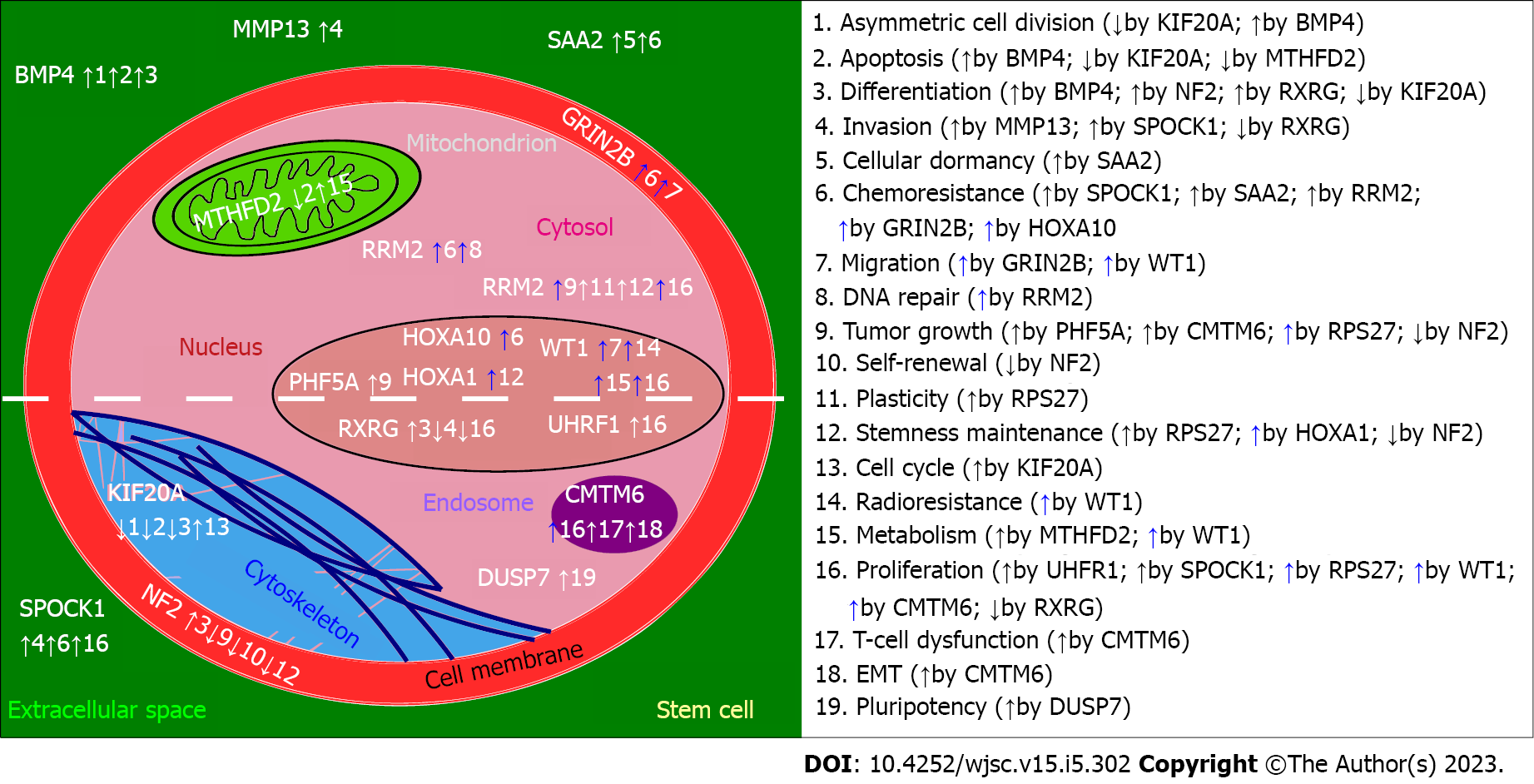Copyright
©The Author(s) 2023.
World J Stem Cells. May 26, 2023; 15(5): 302-322
Published online May 26, 2023. doi: 10.4252/wjsc.v15.i5.302
Published online May 26, 2023. doi: 10.4252/wjsc.v15.i5.302
Figure 2 Impact of described genes on biological processes related to stem cells.
The “↑” or “↑” (blue) symbol indicates activation of the process while “↓“denotes inhibition. The impact of genes on processes (numbered from 1 to 19) is either directly confirmed (solid arrow next to the number) or recapitulated based on available data from various literature sources (dashed arrow next to the number). The “↓” (blue) symbol was not required as any gene inhibited the given process in an indirect manner. The white dashed line dividing the stem cell into two halves separates the genes with a confirmed role in glioblastoma stem cells (above the line) from those involved in cancer stemness outside the glioblastoma context (below the line). Figure created using Inkscape. NF2: Neurofibromatosis type 2 protein; BMP4: Bone morphogenetic protein 4; RXRG: Retinoid X receptor gamma; MMP13: Metalloproteinase 13; RRM2: Reductase subunit M2; SPOCK1: SPARC/Osteonectin; CWCV: Kazal-like domains 1; ECM: Extracellular matrix; CMTM: Chemokine-like factor superfamily.
- Citation: Kałuzińska-Kołat Ż, Kołat D, Kośla K, Płuciennik E, Bednarek AK. Delineating the glioblastoma stemness by genes involved in cytoskeletal rearrangements and metabolic alterations. World J Stem Cells 2023; 15(5): 302-322
- URL: https://www.wjgnet.com/1948-0210/full/v15/i5/302.htm
- DOI: https://dx.doi.org/10.4252/wjsc.v15.i5.302









